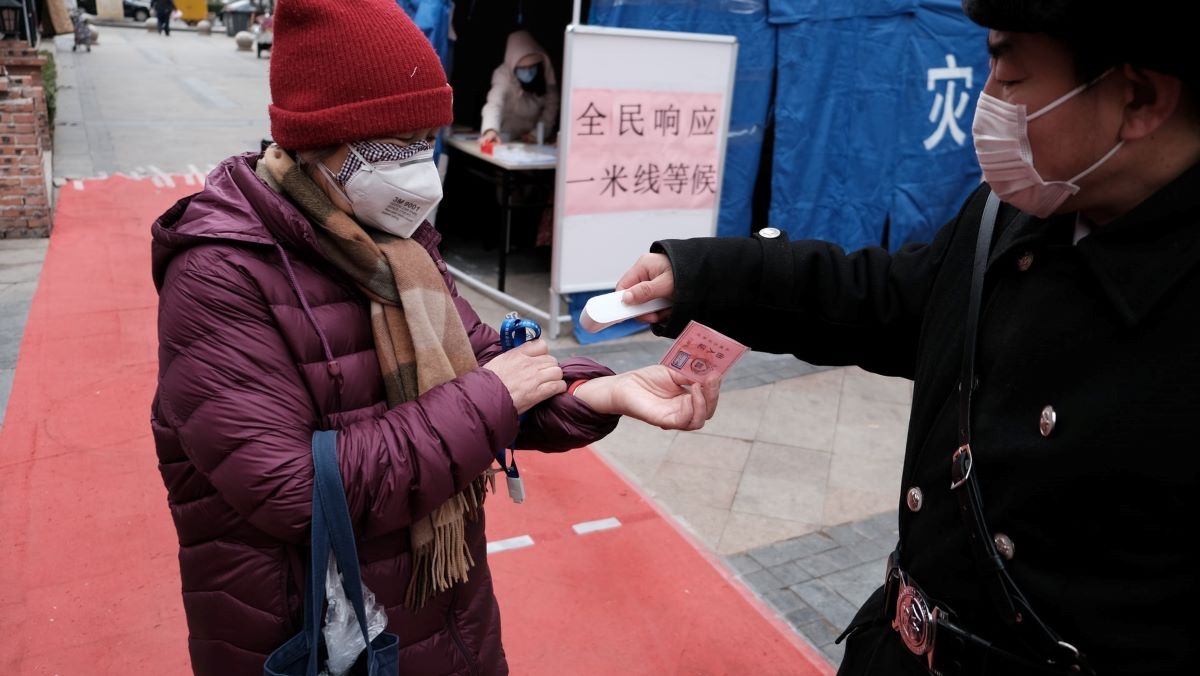
What the West can learn from post-pandemic China
China is gradually returning to normal life following several months of quarantine measures to halt the spread of the novel coronavirus. From mid to late March, Beijing recorded a significant decrease of COVID-19 related cases in hospitals across the country. By April 8, 2020, the lockdown restrictions eased in Wuhan, the capital of China’s central Hubei province. The decision came after municipal hospitals encountered less than three new cases of coronavirus over a span of 21 days.
China’s fight against COVID-19 is far from over. Authorities in Beijing have implemented measures to ensure public safety from a potential second wave. This includes implementation of extensive testing using contract tracing apps which have become ubiquitous throughout the country. The apps rely on pre-existing data to establish whether individuals are at high or low risk of spreading infection. Wuhan officials have assigned a special sanitization task force to routinely disinfect the city. Other cities have followed suit in efforts to further eradicate existing traces of the virus from public places. These procedures are allowing China to construct a pathway towards resuming regular social and economic activities.
The Chinese government’s decision to ramp up testing has been key to the country's reopening. Testing provides concrete data on the number of confirmed cases of the virus, which in turn delivers government and public health officials information on how the virus is progressing throughout society. Chinese Premier Li Keqiang stated that large scale testing will continue to ensure the economic recovery and the safe transition back to regular social life. Testing allows doctors and medical workers to determine both the level of asymptomatic carriers of the virus, and whether the patient reads positive or negative for COVID19. Jia Ping, director of the Beijing Health Government Initiative has stressed the importance of utilizing both categories of tests. Ping says that without anti-body tests, governments and health care workers will encounter severe challenges in their attempts to stop asymptomatic carriers from spreading the virus.
In addition, China’s antibody testing helps researchers gain further insight into how the immune system reacts to COVID-19. For example, widespread and versatile testing creates more data for epidemiologists to consider as they conduct research to establish how antibodies alter over time. Chinese epidemiologists are conducting research to determine whether, after several months post infection, antibodies strengthen or weaken in a person who has tested positive for COVID-19. Since there is currently no vaccine, the data accumulated through testing is crucial to prevent and control the spread of the virus.
Doctors can detect results from the antibody and nucleic acid tests within two to three hours. Expeditious test results are critical in the densely populated mainland where the information can be used to help to minimize the risk of potential carriers infecting a non-carrier of the virus. Those yielding positive test results are required to start 14-day quarantines at home. This policy is designed to isolate carriers from infecting the larger population. After two weeks of quarantine, individuals are tested at their local community offices before being able to return to public spaces.
When it comes to testing, China’s strategy is to identify and quarantine carriers, to harness the virus under human control, as indicated by Du Bin, director of Peking Union’s intensive care unit.
China’s measures to prevent a second outbreak of COVID-19 are centered on advanced information technology in the form of contract tracing. The contract tracing system was initially launched in Hangzhou, the capital of China’s Eastern Zhejiang province, and has since expanded to all cities across China. The Green Health Card/contract tracing app requires every Chinese citizen to scan digital QR codes before entering public spaces. The QR code function compiles data from individual smartphones, which then prompts personal health status rankings using a colour system metric. The health status data uses China’s universal WeChat (W?ixìn) and Alipay (zh?fùb?o) platforms, which are linked to people’s telephone and identification numbers. The colour system metric works as follows: Green indicates healthy and safe persons; Orange indicates persons required to quarantine; Red indicates persons with confirmed cases. Officials are staffed at thousands of public checkpoints throughout the nation to monitor and enforce the colour code system.
China’s contract tracing technology is minimizing the risks of cluster infections in public spaces. A student from Nanjing University of the Arts in China’s Eastern Jiangsu province described the strategy as a necessary instrument in their fight against the virus. She acknowledged that data sharing is often viewed as a controversial topic among Westerners, but believes it is necessary to manage the spread of COVID-19. China has a larger and denser population, which increases the virus’s likelihood to grow exponentially in shared spaces. Data sharing eliminates the threat that, “the whole neighbourhood can catch the virus from one single person”. She says that it is difficult to avoid the possibility of rapid transmission without the public data-based contract tracing technology. From this perspective, preventing cluster infections would have been an impossible task for local governments without adequate data-sharing platforms and contract tracing technology. China’s efforts in repurposing existing and widely accepted technology to mitigate COVID-19 are proving effective as the social and economic order of the country slowly return.
China’s crisis control efforts have involved thousands of city-wide sterilizations to eliminate the virus from public areas. Local governments mobilized sanitization trucks and task forces. Xu Zeyu of Xinhua News reported that on February 9 the Wuhan taskforce began to routinely disinfect the entire city, twice a day. The taskforce sanitized hospitals, shopping centers, and hotels during the period of quarantine. CGTN News China reported that on April 7, Wuhan dispatched 21,000 sanitation workers and 3,200 sanitation vehicles to clean the city before the lockdown was lifted on April 8. Following the lifting of restrictions, sterilization teams continued to navigate the streets of Wuhan to keep the environment clean. As part of the new normal and in support of the on-going phases of the economic reopening, shop owners are sterilizing their stores as often as possible to ensure they are doing all they can to stop a reemergence.
Hundreds of cities across China, from the capital of Beijing to the small industrial city of Luoyang in Henan province, dispatched sanitization trucks in February to combat the virus. These extensive efforts demonstrate the country’s unified determination to overcome and stop the spread of the coronavirus.
Coordination between government officials, health care workers, special taskforces and citizens helped to flatten the curve. Millions of Chinese people and foreign expats under mandatory quarantine had to exercise great patience and adaptability as medical and other officials undertook herculean efforts to control and manage the outbreak. Much of the rest of the world remains in a state of high alert as countries invoke national strategies to ‘flatten the curve’ and blunt the pandemic. Once achieved, they will face the difficult task of implementing policies to increase economic activity while continuing to fight and suppress new coronavirus cases.
The world can benefit from emulating China's strategies towards rehabilitating socio-economic structures. Until there is a COVID-19 vaccine, these or similar measures will be the new reality if countries are to succeed and recover.
Photo: Kian Zhang, Unsplash











